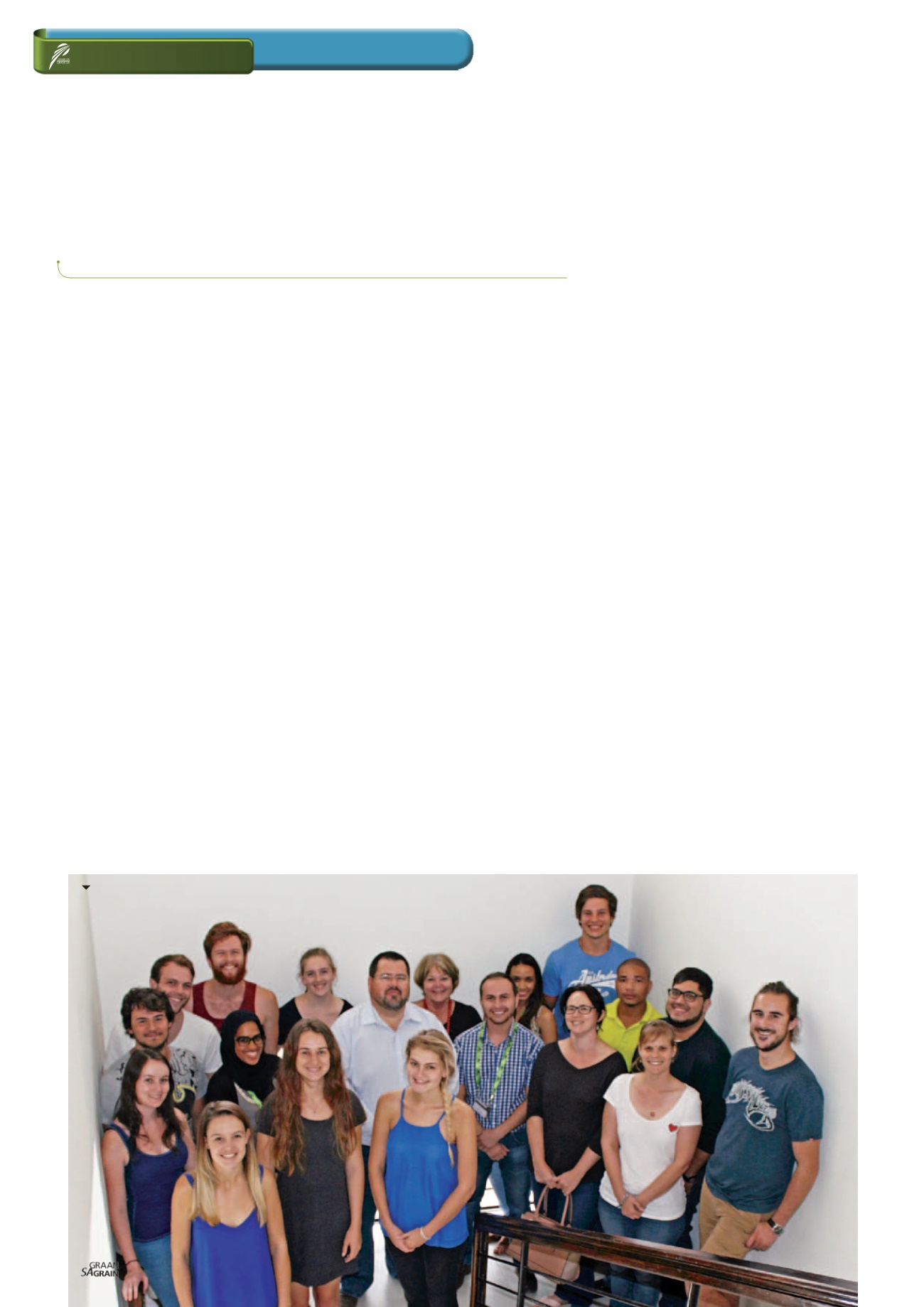

T
he Winter Cereal Trust and Technology and Human Re
sources for Industry Programme have invested in a rust
resistance wheat pre-breeding programme at Stellenbosch
University’s Plant Breeding Laboratory (SU-PBL) since 1998.
he pre-breeding programme is based on a male sterility mediated
marker assisted recurrent selection scheme, which was concep
tualised and developed by the plant breeding laboratory.
Why pre-breeding?
Pre-breeding is one of the most effective ways to achieve the intro-
duction of existing and/or novel genes and/or traits into breeding
programmes. Typically, material stemming from such a pre-breed-
ing effort, usually done in the public domain, is then introduced into
private and/or commercial breeding programmes as crossing par-
ents and/or by direct selection. Thereby breeding programmes are
enabled to achieve quicker, better results.
Proven versatility of
developed germplasm
The plant breeding laboratory was able to release annual nurseries
consisting of several hundreds of lines that were used as crossing
parents and/or as direct introductions by recipient breeding pro-
grammes for more than a decade addressing mostly disease resist-
ance. Although the primary focus of the pre-breeding effort has
been on rust resistance through a concerted effort, the base popu-
lation has been improved to also display acceptable quality char-
acteristics, a competitive grain yield and agrotype which assist in
making nursery lines acceptable crossing parents for collaborators’
breeding programmes.
The material from the population, although aimed at a pheno-
type suitable for the Western Cape production area, has also
proved suitable for use under irrigation and in other diverse dry
land conditions.
Establishment of platform
With improved grain yield being the foremost identified need
from a producer’s perspective, Grain SA facilitated the establish-
ment of the National Wheat Breeding Platform in 2015, funded by the
Department of Science and Technology as part of the national Bio-
economy strategy, with the aim of improving on-farm grain yields.
The SU-PBL, ARC-Small Grain, Sensako and Pannar are all partici-
pants in the platform and during 2016 the Winter Cereal Trust also
started making funding available. On 31 October last year the then
minister of the Department of Science and Technology, Naledi
Pandor, officially launched the venture during a visit to the Welgeval-
len experimental farm, Stellenbosch.
Pre-breeding aimed at yield improvement
Internationally a lot of momentum is currently gathering in this field
and South Africa therefore desperately needs to capitalise on the
new developments with regards to wheat genetics, improved breed-
ing methodology and the complimentary agronomic practises that
are currently being implemented. Given the proven track record of
developed germplasm, versatility of the base population, experience
in seed production and surrounding logistics in the distribution of
nurseries, the plant breeding laboratory’s pre-breeding programme
was dramatically expanded with the aim to include specifically
yield related traits.
Objectives
In order to realise this new emphasis several objectives, formulated
as work packages, were identified and are currently being pursued.
The first is stakeholder engagement which is vital to making a
modern-day pre-breeding programme a success as well as mak-
ing it relevant. Stakeholders in the programme comprise of the
Relevant
Willem Botes,
senior lecturer and head: Plant Breeding Laboratory, Stellenbosch University and
research leader for the DST-Grain SA National Wheat Breeding Platform
Julie 2018
96
Currently more than a dozen students are reliant on the programme for
their projects and are contributing to the success of it.
















